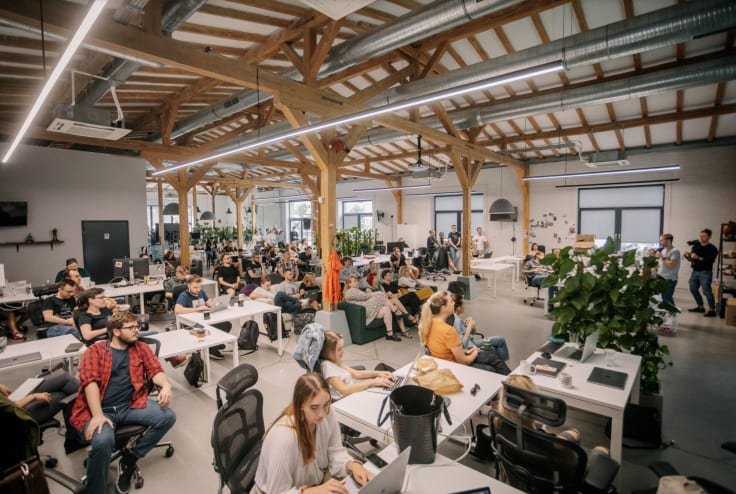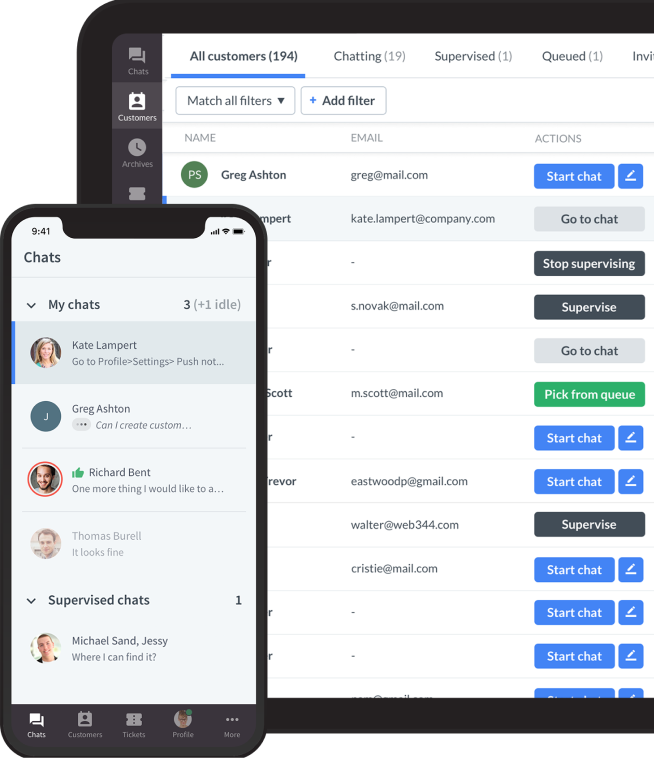Showing top 0 results 0 results found
Showing top 0 results 0 results found

- Get to know other team members.
- Work out clear goals and a clear vision.
- Define clear roles for better team performance.
- Improve skills to support work efficiency.
- Support a sense of community.
- Work better as a remote team.
- Try team building events for remote teams.
- Hire effective team leaders.
As Michael Jordan once said: “Talent wins games, but teamwork and intelligence win championships.” Working together as a team is essential, and it allows you to exchange ideas, create big projects, and follow through with established goals. So, how do you effectively work in a team?
A good team is never a coincidence. Achieving synergy requires a lot of work from the manager and team members. You must work on open communication, a consensus vision, and establish clear group roles. Harvard Business Review did research to find out which factors can contribute to building collaborative teams. They considered more than 100 factors and isolated eight practices that correlated with success. These practices helped overcome the difficulties of size, remote work environment, different time zones, diversity, and specialization.
Teams around the world differ in management and communication styles. That’s why it’s always good to learn from the best companies and find the solution tailored to your people.
Get to know other team members
The inevitable step in building an effective team is for each member to get to know each other – but not only by their names. We're talking about learning somebody’s values, goals, strengths, and how they work. Once you know other team members a little more, it's easier to define how to best work together.
In their research, Harvard Business Review found that while we no longer need convincing that diversity is an asset, it is important to realize that communication may be challenging when there is little common background. That is why the most successful companies take strategic actions and allow time for new employees to get to know the people they’ll be working with.
Work out clear goals and a clear vision
When the team members know each other well, they can start working towards one goal. Are you sure that everyone sees the goal in the same way? And if so, do they know how to achieve it?
Team members often have different visions of the projects, even though it seems everyone knows what they're doing. Let me give you an example.
My friend took part in a big project. The goal was to renew their internet browser, meaning they had to design a new one. The squad consisted of a researcher, graphic designer, UX designer, and programmers. Each of them knew what they were supposed to do. They were to create an innovative, nice-looking browser. What happened was that, along the way, it turned out they all understood “innovative” and “nice-looking” in a completely different way, which caused some friction and delayed the execution. To develop a shared vision, they brought pictures describing their concept of the browser. It turned out that some of them saw it as a browser for chill young people, and some of them thought it more official.
As you can imagine, working toward one common goal with totally different visions is hard, so they discussed everything and eventually agreed. After the discussion, people started to choose other people’s pictures to show how the browser could look. They reduced the number of pictures and worked out a shared vision. Since then, the work sped up, and everyone knew what direction the production should be going in.

Define clear roles for better team performance
Once the vision is set, forming a team and structuring work efficiency is crucial.
Newly formed teams must invest significant time and effort into building trusting relationships. Not only is it essential to define an approach toward achieving a goal, but it’s also important to clearly specify roles for individual group members. Collaboration improves when the roles of individual members are clearly defined and understood.
Once that happens, people feel they can do a significant portion of their work independently, using their individual skills to perform project tasks. They can focus on what they do best. Individual work is as important as teamwork in the production of results.
At LiveChat, for example, we believe that "teamwork" is one value that allows us to work on the best live chat tool (you don't have to believe me, you can test it for yourself) and still enjoy what we do. We have our creative independence, which makes working together much more enjoyable.
Improve skills to support work efficiency
The research by Harvard Business Review found that some teams had a collaborative culture but needed to be more skilled in the practice of collaboration itself. They were encouraged to cooperate and wanted to cooperate, but they didn’t know how to work conjointly in teams very well.
The study showed that many skills were crucial, such as an "appreciation of others, being able to engage in purposeful conversations, creative and productive conflict resolution, and program management.” Companies can make a huge difference in how employees work by training them in those areas.
Support a sense of community
Bill Marriott, the ex-chairman of the Marriott corporation used to run his own blog where he discussed various topics, from Marriott’s efforts to become greener to his favorite holiday spots. His blog was very popular among employees and supported the idea that the company is a community.
That’s just one idea. Some companies have created big office spaces, an indoor atrium, or a campus. Just like a small town, with retail shops, restaurants, and jogging tracks - something like the Apple Campus. It helps employees to remain on campus throughout the day, improves communication, increases the exchange of ideas, and creates a sense of community.
Nowadays, however, more companies or industries go online for a virtual co-presence. Communication solutions such as Slack or Jira help work through the challenges of the lack of physical presence.

How to better work together as a remote team
In the post-pandemic world, more companies have gone hybrid or fully remote. Going global can help with the 24/7 coverage of your business. It may be necessary for your industry, but it requires more effort to organize work for your team.
According to Matt Mullenweg from Automattic, the company behind WordPress.com, the future of remote work is asynchronous.
His company has been fully remote and asynchronous since its inception in 2005. Such companies rely heavily on online written communication and documentation, so clear writing is necessary. Automattic’s replacement for meetings and most office collaboration is P2, a modification of WordPress that it announced in August 2020 at the height of the pandemic. A P2 post looks more or less like a blog post, with threaded discussions, the ability to follow replies, and a Like button. Whenever employees want to discuss anything with distant colleagues — for instance, a coder in the United States who wants to share something with a designer in South Africa who’s asleep at the time — they can write about it on the company’s P2 instance. Anyone else who is potentially interested can find the same post with a search or through various discovery features built into the platform.
Remote work can help people excel in their working styles in several ways, such as flexibility in a work environment, personalized work schedules, enhanced autonomy and ownership over their work, improved focus and minimized distractions, access to diverse perspectives, and global collaboration.
With all those remote and asynchronous work perks come challenges to creating cohesive teams. That's why leaders need to consider some strategies for boosting teamwork.
Team building events for remote teams
Such events are designed to promote working together, strengthen relationships, and boost morale. Make sure to adapt those activities to suit the needs and preferences of your team. Refrain from forcing people to join meeting rooms or group chats. Instead, create a positive and inclusive environment that encourages participation and collaboration.
Two truths and a lie: Each team member shares two true and one false statement about themselves. The rest of the team tries to guess which one is the lie.
Weekly personal highlights: Dedicate a portion of team meetings for each member to share personal highlights from their week, such as a new hobby, a memorable experience, or a favorite book.
Photo caption contest: Share funny or interesting photos and have team members submit captions. Vote for the best caption and announce the winner.
Online escape rooms: Solve puzzles and work together as a team to escape from a virtual escape room scenario.
Mindfulness or meditation sessions: Schedule regular virtual mindfulness or meditation sessions led by an instructor or team member to help reduce stress and promote well-being.
At LiveChat, we have the WHOA week in late September, when we all travel to the LiveChat headquarters in Wroclaw, Poland, and do some work and a lot of being together in person. Such a week of intense interaction and engagement is an investment in trust and connection.
Effective team leaders
Team leaders play a crucial role in fostering collaboration and ensuring that individuals work together effectively. They make sure people are on the same page when working on a project, offer support, track results, and let everyone use their expertise to help the company succeed.
Leaders often don’t think about the type of leader they are. Generally, they fall into either the task-oriented or relationship-oriented leadership style. Is one better than the other? Studies have been conducted to determine that, but no one style is instrumental to the success of a leader in every situation.
The land of leadership is a dynamic place, which means the best leaders can change their managing style during the project. They balance both leadership styles, which should be applied in response to a particular situation. It's definitely a tough job.
Effective leadership requires a combination of various skills and the ability to juggle them. Leaders set clear goals, monitor the results, and offer additional support and problem-solving skills whenever needed. Yes, they face the pressure of making decisions, they're accountable for the team's results, manage people, deal with changes in the market or internally, balance priorities, and more.
Despite the challenges, leadership can be rewarding and fulfilling. Effective leaders have the opportunity to make a positive impact, inspire others, drive change, and contribute to the success of their team or organization.
Working together as a team
There’s a lot you can gain by working together. Usually, there are many people with different skills working on one project. Creating a smooth flow between them is important for exchanging ideas and utilizing each other's abilities for the best work.
What’s crucial along the way is to communicate openly and motivate each other and give individuals the space to develop their skills and shine through their work. These skills combined make for a happy and efficient team.
If you want to read more about how to get a team to work together, check out 15 of the Best Teamwork Quotes that Will Inspire Your Team to Work Together.
Get a glimpse into the future of business communication with digital natives.
Get the FREE report








Comments